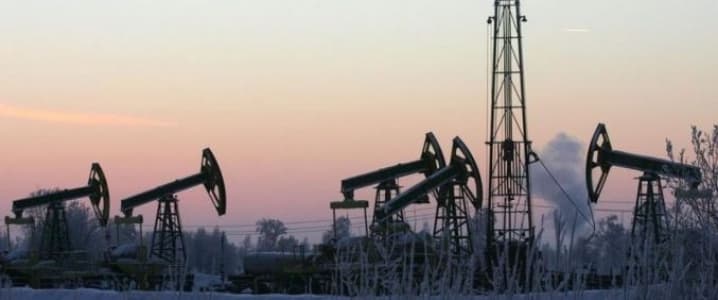The lulling stability of oil prices over the last months has been a welcome respite, and both Saudi and Russian authorities have declared the glut ended. The balance, however, is unconventional and perhaps unstable since it is not a balance of supply and demand.
While demand has continued to creep and production to decline, the stability delicately balances two larger moving parts on the supply side: increasing supply from some countries and supply interruptions elsewhere. Expectations of future prices require calculations of each of these two largest moving parts.
According to OPEC, demand growth is around 100,000 bpd/month, and total non-OPEC supply decay is expected around 60,000 bpd/month both for 2016. While supply from Russia and Iran as well as Saudi Arabia and its satellites have expanded, overall supply is down 800,000 bopd, making the appearance of a balancing market. In fact, it is the predicted force majeure-style interruptions which have accelerated and continued to drive oil prices over the past few months.
Though actual and threatened strikes have had minor impacts, larger interruptions have concentrated in three locales: Canada, Nigeria and to a lesser extent in Colombia. The Fort McMurray fire shut down 1.5 million bopd at its peak, and rates are still suppressed. Return and restoration projects are beginning, and production may take some time to reach previous levels. Research has now established what had previously been expected, namely that the fire was caused by people and not nature. Related: Oil Dragged Lower By Crashing Gasoline Futures
(Click to enlarge)
Source: Natural Resources Canada’s Canadian Wildland Fire Information System via WSJ
The image above shows the extent of the blaze in its first days as determined by Canadian authorities. It was meant to show how rapidly the fire spread, but it also happens to show how serendipitous the location was for interrupting production. It started about five miles directly upwind of Fort McMurray.
Less circumstantial but almost as disruptive, sabotage in Nigeria has taken out 1 million bopd, nearly half of the nation’s production, in a rapid series of attacks all by the “Niger Delta Avengers.” Their debut attack in February was conducted under 20 feet of water using a well-placed, military-style explosive, and then the previously-unknown group did not claim responsibility for nearly two months. Since then the mysterious saboteurs have stepped up to weekly attacks and continue to use methods unorthodox for the region. Instead of using hack saws and stealing oil, the Niger Delta Avengers destroy, and they do so with sophistication. As one local analyst reported, “They knew exactly where to attack and the time to attack. There was literally nothing you could do.” Related: Why Chevron And Shell Are Better Bets Than BP and Exxon
The group has pledged to reduce oil production to nothing while, ironically, refusing dialogue, making ridiculous demands and not responding to requests for media interviews. The Avengers continued to attack even as other rebels in the Delta continue to honor a cease-fire and condemn the Avenger’s attacks. The Nigerian government recently claimed that the Avengers were involved in truce negotiations, but a spokesman for the group denies the claim. In total and other than location, the pattern of behavior by the Niger Delta Avengers does not fit the pattern for regional, indigenous discontent, and it shows no sign of true resolution.
Colombia has suffered similar resurgence in pipeline sabotage: similar timing and similar effects. By May, there had been 14 pipeline attacks in Colombia taking offline up to 900,000 bopd of production. The biggest and most recent attacks have been blamed on, though not claimed or disavowed by, the second largest rebel group, the ELN, after agreeing in March to negotiations with the government. The presumed culprit is, in this case, well-known, but the resurgence is novel. As in Nigeria, there are not near-term prospects for resolution.
These three major interruptions have been each irregular and out-off-sync, but together and in combination they have more than absorbed the supply growth from other countries over the last months. Smaller increases in supply have come from Saudi Arabia and its satellites, not unlike the joint play they made for market share previously in this cycle.
Much larger increases have come, however, from Russia and Iran, the same two countries which seem to have the national character and military capabilities to support international force majeure-style interruptions. Both countries have increased supply by hundreds of thousands of bopd each. Iran claims the intent to increase supply significantly more, but the capacity of both countries to increase supply is debatable.
Beside the prospect of increasing Iranian supply, some analysts worry about the potential return of Libyan production and the possible return of supplies from Canada, Nigeria and Colombia. These are perfectly reasonable concerns since the current, tenuous balance is predicated on supply interruptions. The return of production back to capacity would without doubt drive prices down. In my view, the same forces which have led to the current balance are likely to continue to operate to keep oil prices, while potentially volatile, between the observed limits of $30 and $70 per barrel.
By Dwayne Purvis for Oilprice.com
More Top Reads From Oilprice.com:
- Will Iran Scare Away Big Oil Once Again?
- Why An Oil Price Crash Remains Unlikely
- Gas Pump Skimming At New Records This Holiday Weekend



















